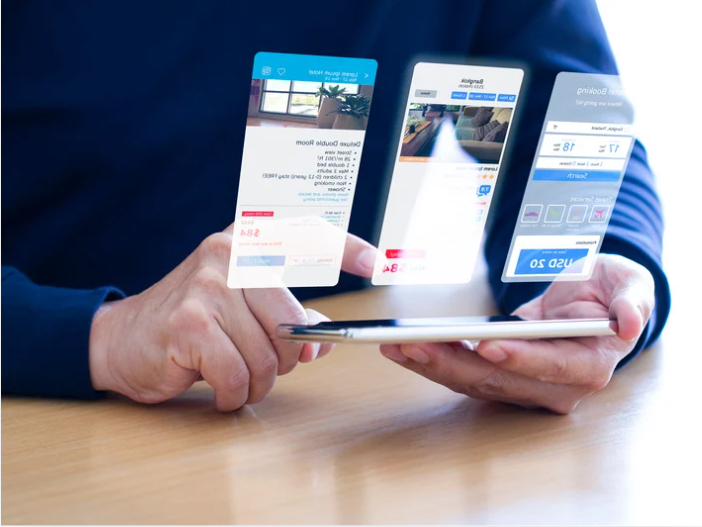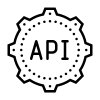Enquiry Form
What is Application Modernization?
Application modernization is the strategic process of updating and enhancing legacy applications to meet the demands of today's rapidly evolving technological landscape. It involves leveraging modern technologies, architectures, and development practices to breathe new life into outdated software, making it more agile, efficient, scalable, and secure. Application modernization goes beyond simply fixing bugs or upgrading to the latest version; it's a transformative journey that ensures your applications remain relevant, competitive, and capable of supporting your business goals.
How to Choose the Best Application Modernization Company
Selecting the right application modernization partner is crucial for a successful transformation journey. Key factors to consider include:

- Expertise and Experience: Look for a company with proven experience in modernizing applications across various technologies and industries.
- Technology Proficiency: Ensure they have expertise in cloud platforms, microservices architectures, DevOps practices, and other relevant modern technologies.
- Understanding of Your Business Goals: Choose a partner who takes the time to understand your business objectives, challenges, and desired outcomes to tailor a modernization strategy that aligns with your needs.
- Proven Methodology and Approach: Inquire about their modernization approach, ensuring they follow a well-defined process that minimizes risks and maximizes results.
- Cost and Timeline Transparency: Discuss project costs and timelines upfront, ensuring they provide realistic estimates and are committed to meeting deadlines.
- Client References and Case Studies: Request references and review case studies to evaluate their track record and successful modernization projects.
- Post-Modernization Support: Ensure they offer ongoing support and maintenance to ensure your modernized applications remain secure, updated, and performant.
Impact of Application Modernization on Your Business
Embracing application modernization can yield a multitude of benefits for your business:
- Enhanced Agility and Scalability: Modernized applications built on cloud-native architectures and microservices offer unparalleled scalability and flexibility, enabling you to adapt swiftly to changing market conditions and customer demands.
- Improved User Experience and Productivity: Intuitive interfaces, seamless integrations, and enhanced performance empower employees and customers to interact with your applications more efficiently and productively.
- Reduced Costs and Increased ROI: Eliminate the burdens of maintaining outdated legacy systems and leverage the cost-efficiencies of cloud computing and modern technologies.
- Enhanced Security and Compliance: Bolster your defenses against cyber threats and ensure adherence to data privacy regulations by implementing cutting-edge security measures and protocols.
- Innovation and Competitive Edge: Leverage modern technologies like AI, machine learning, and data analytics to unlock new capabilities, innovate faster, and stay ahead of the competition.
What Features Should You Expect in Application Modernization?
Application modernization offers a plethora of features to transform your legacy applications:

Cloud Migration:
Migrate your applications to cloud platforms like AWS, Azure, or Google Cloud for scalability, cost efficiency, and flexibility.

Microservices Architecture:
Break down monolithic applications into smaller, independent services for easier development, deployment, and maintenance.

Containerization:
Package applications and their dependencies into containers for consistent and reliable deployment across different environments.

DevOps Implementation:
Adopt DevOps practices to streamline development, testing, and deployment, enabling faster releases and continuous improvement.

Refactoring and Code Optimization:
Improve code quality, performance, and maintainability through refactoring and optimization techniques.

Legacy System Integration:
Integrate modernized applications with existing legacy systems to ensure data continuity and seamless operations.

User Interface (UI) Modernization:
Update outdated user interfaces with modern design principles and technologies to improve user experience and engagement.

API Development and Integration:
Enable seamless communication and data exchange between your modernized application and other systems through APIs.

Performance Monitoring and Optimization:
Implement tools to continuously monitor and optimize application performance, ensuring responsiveness and scalability.

Security Enhancements:
Upgrade security measures and protocols to protect your applications and data from cyber threats and vulnerabilities.

Data Migration and Management:
Migrate data from legacy systems to modern databases and implement data management strategies for improved efficiency and accessibility.

Cloud-Native Development:
Build new cloud-native applications that leverage cloud technologies for scalability, flexibility, and cost-effectiveness.

Artificial Intelligence (AI) and Machine Learning Integration:
Enhance your applications with AI and machine learning capabilities to automate tasks, improve decision-making, and provide personalized user experiences.

Mobile Optimization:
Adapt your applications to be responsive and accessible on mobile devices, catering to the growing mobile user base.

Testing and Quality Assurance:
Conduct rigorous testing throughout the modernization process to ensure a bug-free and high-quality end product.
For which 5 Industries Can Application Modernization Be Useful?
Application modernization can benefit businesses across various sectors, enabling them to stay competitive and meet evolving technological demands.

- Enhance customer experience, streamline operations, and ensure regulatory compliance through modernized applications.
- Modernize legacy banking systems for improved efficiency and customer service.
- Implement digital payment and transaction platforms for a seamless user experience.
- Upgrade risk management and fraud detection systems to mitigate financial risks.
- Leverage cloud technologies for scalability and cost-effectiveness.
- Ensure compliance with evolving financial regulations and data privacy standards.

- Improve patient care, streamline workflows, and ensure data security through modernized healthcare applications.
- Modernize electronic health record (EHR) systems for better patient data management and accessibility.
- Implement telemedicine and remote patient monitoring solutions for improved patient care and engagement.
- Upgrade healthcare information systems to facilitate data sharing and collaboration among providers.
- Enhance cybersecurity measures to protect sensitive patient information.
- Leverage data analytics to gain insights into patient outcomes and improve treatment plans.

- Deliver personalized shopping experiences, optimize inventory management, and increase sales through modern e-commerce platforms.
- Upgrade legacy e-commerce systems for enhanced performance and scalability.
- Implement mobile-first design and responsive web development for improved user experience across devices.
- Integrate advanced analytics and personalization engines to provide tailored product recommendations.
- Enhance inventory management and order fulfillment processes for efficiency and cost reduction.
- Implement omnichannel strategies to provide a seamless shopping experience across online and offline channels.

- Streamline production processes, optimize supply chain management, and improve operational efficiency through modernized applications.
- Upgrade legacy manufacturing execution systems (MES) for real-time data visibility and improved production planning.
- Implement predictive maintenance solutions to minimize downtime and optimize equipment utilization.
- Leverage IoT (Internet of Things) technologies for real-time asset tracking and monitoring.
- Enhance supply chain visibility and collaboration through cloud-based platforms.
- Utilize data analytics to gain insights into production bottlenecks and optimize manufacturing processes.

- Improve route optimization, enhance fleet management, and streamline delivery processes for increased efficiency and customer satisfaction.
- Modernize transportation management systems (TMS) for improved route planning and scheduling.
- Implement real-time tracking and visibility solutions for shipments and deliveries.
- Utilize fleet management software to optimize vehicle utilization and maintenance.
- Leverage data analytics to identify cost-saving opportunities and improve logistics operations.
- Enhance customer communication and provide real-time updates on delivery status.
Modernize Your Applications: Enhance Performance & Scalability with Software in Demand
Unlock the power of application modernization with Software in Demand. Upgrade legacy systems, enhance scalability, and ensure business continuity with our expert solutions.
Application Modernization FAQ
Here is a list of frequently asked questions about Application Modernization

